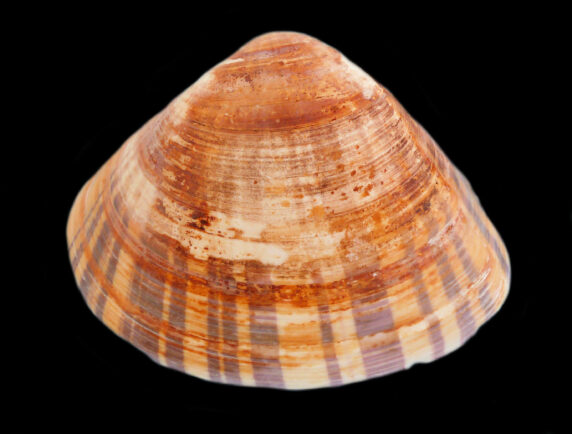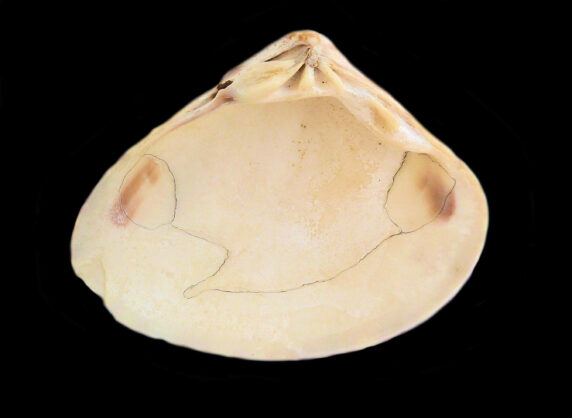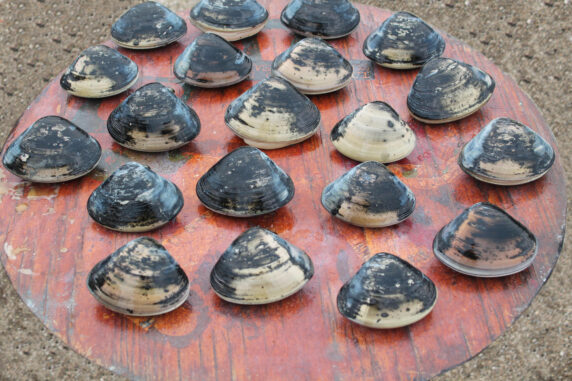Pismo Clam Shell, Tivela stultorum

 Pismo Clam, Tivela stultorum. Shell collected from within the estuary of the Magdalena Bay complex, Baja California Sur, October 2018. Size: 10.2 cm (4.0 inches) x 8.1 cm (3.2 inches).
Pismo Clam, Tivela stultorum. Shell collected from within the estuary of the Magdalena Bay complex, Baja California Sur, October 2018. Size: 10.2 cm (4.0 inches) x 8.1 cm (3.2 inches).
 Pismo Clams, Tivela stultorum. Collections from the intertidal zone of Bahía Santa Rosalillita, Baja California, September 2015. Sizes: 13 cm (5.0 inches) to 15 cm (6.0 inches). Collection, photograph and identification courtesy of Barry Mastro, Escondido, California.
Pismo Clams, Tivela stultorum. Collections from the intertidal zone of Bahía Santa Rosalillita, Baja California, September 2015. Sizes: 13 cm (5.0 inches) to 15 cm (6.0 inches). Collection, photograph and identification courtesy of Barry Mastro, Escondido, California.
The Pismo Clam, Tivela stultorum (Mawe, 1823), is a Venus Clam of the Veneridae Family. They are also know as the Giant Tivela and in Mexico as almeja pismo and trivela de pismo. It has a thick, heavy shell that is rounded at both ends with a triangular profile. The beak is centered between the ends, the hinge is strong, and they have short siphons. The exterior surface of the shell is smooth. The exterior shell color is cream to gray or buff color, often with purple-brown radiating bands and many are covered by varnish-like periostracum; the interior is white. Pismo Clam Shells reach a maximum of 17.6 cm (6.9 inches) in length and 14.0 cm (5.5 inches) in height.
Pismo Clams are found buried in sand along beaches exposed to surf, intertidally and to depths of 21 m (70 feet). They range from Central California to Magdalena Bay, Baja California Sur and the Socorro Islands. They have been documented at several locations in the north and central Sea of Cortez with populations present due to human introduction.
Synonyms include Cytherea crassatelloides, Cytherea dubia, Cytherea intermedia, Cytherea solidissima, Cytherea virginea, Donax stultorum, and Tivela scarificata.